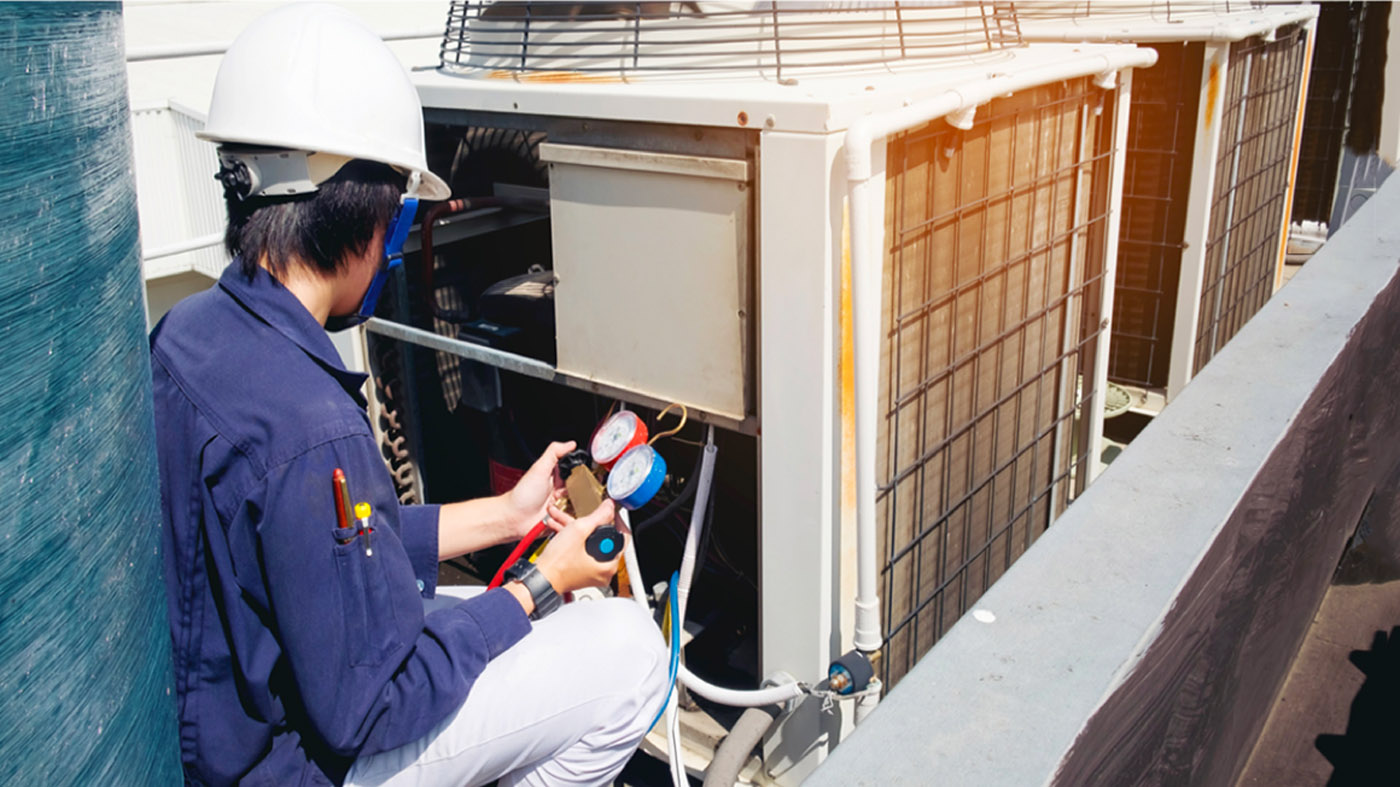According to Reliability Web, maintenance management typically makes up 40% to 50% of operational budgets. Therefore, the possible savings from increased efficiency, such as the ability to spend money where it will create the most value and reducing the number of unnecessary maintenance orders, is significant. Supporting this, Transcendent reported that the average company can save between 12% and 18% of their maintenance budgets by prioritizing preventative maintenance over reactive maintenance.
Understanding historical facility data can empower stakeholders to create a best-in-class facility management budget. Likewise, the careful consideration of reactive and preventative maintenance needs, as well as of plans for spending capital on replacement equipment, can benefit budget creation. As will be reviewed below, by using strategic resource planning, emphasizing preventative maintenance and thoughtfully deploying a capitalization policy, facility managers can successfully forecast costs. This includes taking steps such as:
- Creating a framework for maintenance expenses
- Considering capital projects
- Aligning labor and inventory availability
- Leaving some wiggle room
- Working with a facility management partner
A firm foundation of insights informed by data can be leveraged for accurate capital planning.
ACCURATE DATA UNLOCKS THE POTENTIAL OF FACILITY BUDGETS
Armed with historical facility data, industry trends and capital project plans, facility managers can determine which percentage of their budgets to allocate to reactive maintenance, preventative measures and capital investments. However, facility managers who work with distributed locations often struggle to make sense of large volumes of data, which can make it difficult to establish budget parameters.
A facility management partner such as Vixxo can fill in this gap by leveraging more than 45 million industry- and region-specific data to inform pricing. Work order data includes:
- Labor rates
- Material costs
- Average work order duration
- Trip charges
- Regional taxes
It’s important to have this information since each type of data impacts budgetary spending. For example, knowing material costs ahead of time can help stakeholders to determine if they are overspending on work orders.
Additionally, a management partner such as Vixxo can implement an asset tagging program to accurately track, monitor, and analyze equipment performance. Access to this granular data allows facility stakeholders to forecast their future resource needs, which is important knowledge to possess when budget allocations shift over time.
For instance, 45% of facility managers saw their operating budgets increase between 2016 and 2017, as reported by FacilitiesNet. Similarly, 40% saw their capital budgets increase over the same period. In other words, facility managers may have more money to allocate than in previous years. Historical facility and industry data will help managers determine where this investment can best contribute to organizational growth. For example, access to additional resources may allow stakeholders to work on projects that were previously delayed due to lack of resources.
To determine how best to forecast facilities spend, stakeholders need access to actionable data. In fact, best-in-class companies are 74% more likely than their peers to provide easy access to facility data for employees. However, this data is just one piece of a larger puzzle.
KEY TIPS FOR FORECASTING FACILITY MANAGEMENT COSTS
While there’s no one-size-fits-all solution that suits facilities of all types, there is a strategy that can support creating a budget: Determining short- and long-term expenditures, forecasting vendor costs and developing a plan for unexpected expenses. Enterprises with distributed locations may also need to develop unique budgets for each region.
TIP #1: CREATE A FRAMEWORK FOR MAINTENANCE EXPENSES
Pain point: How can you account for all expenses that should be considered in a maintenance budget?
Solution: Factor in historical and industry data to best forecast future needs.
According to The National Academies of Sciences, Engineering and Medicine, an appropriate budget allocation for routine maintenance and repair for most facilities typically ranges from 2% to 4% of the aggregate current replacement value of the facility, excluding land and major infrastructure.
For example, if the aggregate replacement value of all equipment within a facility is $1 million, then a safe minimum maintenance budget would be between $20,000 and $40,000.
Vendor costs should not be ignored. The ability to accurately forecast spend is easier when you prioritize preventative actions because there will be fewer unexpected equipment failures, but no one can predict the future for certain. Historical facility and industry data can provide some guidance. Likewise, allocating additional resources for preventative maintenance can reduce repair and replacement costs down the line.
Actively used equipment isn’t all that needs to be monitored. The budget should address the preventative maintenance needs of exterior structures such as parking lots, roofs and building facades. When these major assets are not routinely maintained, it accelerates their deterioration and increases long-term spend.
An effective maintenance budget framework utilizes industry best practices informed by tailored data and historical facility trends.
TIP #2: CONSIDER CAPITAL PROJECTS
Pain point: How can you ensure that capital projects don’t consume resources intended for maintenance?
Solution: Establish a capitalization policy that creates spending thresholds.
Beyond routine maintenance and repair, the budget should reflect upcoming construction projects. According to IndustryWeek, approximately 33% of capital projects under $500 million are late or over budget. The budget allotment for construction will vary greatly depending on the extent of the project, impact on human resources and regulatory concerns. A capitalization policy reduces record-keeping costs and ensures projects don’t exceed budget allocations.
A capitalization policy is used to set a threshold. Expenditures above the threshold are recorded as fixed assets - any asset with a useful life beyond a single reporting period - and expenditures below the threshold are charged as incurred expenses. Best-in-class enterprises will use a programmatic approach utilizing facility maintenance data to make decisions pertaining to capital.
TIP #3: LEAVE SOME WIGGLE ROOM
Pain point: How do you prepare for unforeseeable maintenance needs?
Solution: Programmatically review industry data to forecast project resource requirements.
At the end of the day, even the most precise budget will vary from its original form. A recent McKinsey report found that facility owners and construction stakeholders often disagree on how much projects will cost. In fact, large projects across asset types typically cost 20% more than originally estimated.
Therefore, a budget should account for changes down the road. If every dollar is allocated in advance, there could be problems if the budget needs to scale up. It’s impossible to predict every maintenance task that will crop up over a year. It’s more important to be prepared for the unexpected with some wiggle room, which can be strategically planned if informed by the right data.
Vixxo supports budget forecasting with historical data and industry-level trends. When managers understand exactly how long maintenance tasks should take and how much they should cost, it becomes easier to forecast budgetary needs.
TIP #4: WORK WITH A FACILITY MANAGEMENT PARTNER
Pain point: How do you create a proactive budget that optimizes operational investments?
Solution: Partner with a facility management team to uncover opportunities that align with your specific goals.
Facility managers know how to create effective maintenance budgets. After all, who knows your facility better than you? Your facilities expertise, combined with the knowledge of a facility management partner, can help you save money by monitoring your facility and equipment performance, identifying trends and uncovering opportunities.
Connect with an expert consultant at Vixxo to learn more about how to align industry best practices with your organization’s unique pain points. A conversation can help you understand how a standardized budgeting method is essential in creating optimized operational budgets. Vixxo’s wide range of solutions provide holistic visibility into every transaction at the equipment level and gives you the strategic intelligence you need to grow your business.




